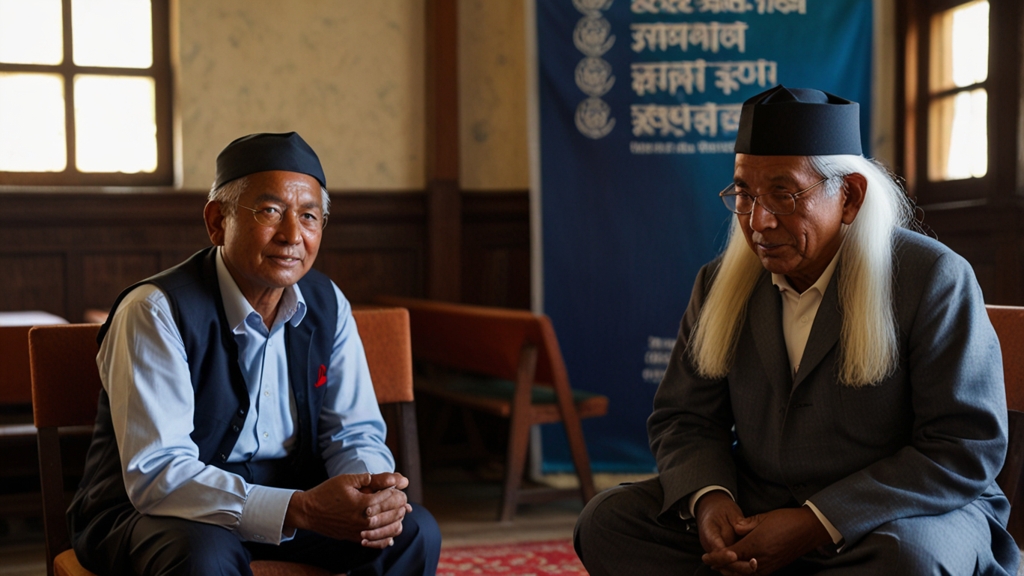Nepal’s government has unveiled a blue print to develop renewable energy resources to mitigate black outs and avert further reliance on petroleum products. The plan has been made by Ministry of Energy, Water Resources, and Irrigation and aimed to install more than double of installed renewable power capacity of the country within next ten years.
Central to the plan is a pledge to develop new renewable energy of 15,000 MW by the year 2030 from the current estimate of about 2,000 MW. This cannot be achieved through hydropower, Solar, and wind energy projects where Nepal is blessed with natural resources to support the projects.
In addition, hydropower, which is currently one of the most significant energy sources in Nepal, is expected to double in the new plan. The government has also planned for numerous big hydroelectric power stations that also involve other rivers, which have features of a river run that disturb the environment minimally. These projects are designed to supply electricity to domestic consumers and to create Nepal’s potential energy exports to neighboring countries.
Renewable energy sources, especially solar, are expected to be a vital component of the energy addition mix. The installation of utility-scale solar power plants to generate electricity on the country’s plains is still in the previous development stages. The government is also encouraging the use of rooftop power systems in the urban city centers through the provision of incentives and subsidies. This call for solar energy is believed to ensure electrical supply during the dry season, which is characterized by poor water supply and, hence, reduced hydropower generation.
While not very much tapped in Nepal, wind energy is also among one of the diversification options. This arrangement will involve extensive surveying for wind to develop probable sites for the wind farms most especially the hillier areas which offer the best resources for wind.
The current government has declared numerous policy initiatives and critical incentive measures to back up this great strategy. Among them are efficient licensing procedures for renewable energy projects; tax incentives for investments in clean energy; and creation of fund to support known projects. It also focuses on enticed both domestic and foreign investment in the sector through public private partnerships.
The renewable energy undertaking is well connected to Neapal’s broader economic development aspirations. This way, the government is planning to deliver an accountable power supply to encourage industrial development, render employment for its people, and enhance the life standards of citizens. It has been proposed that the plan will make a massive impression on Nepal’s attempts to increase rural electrification and may help to affect the lives of millions of Nepalis who do not have a constant supply of electricity at the moment.
The plan also takes into account of the environmental needs and area, and has a very robust stand on the sustainable development aspects. The transition to the use of renewable energy will greatly minimize Nepal’s emission of carbon and thus play a part in fighting climate change. It also involves the environmental effects and creation of mitigation measures of how energy development affects the people.
Lack of education and skills serves as an important component of the renewables energy strategy. Specifically, the development of additional discipline training institutions and modification of higher education curriculum to meet the emerging renewable energy market demand is part of the government’s action plan. This emphasis is looked at in the context of effectively developing human resource for the sustainability of the initiative.
As Nepal is in the process of such audacious endeavour of energy self-reliance through renewable resources, the plan has attracted interest of international donor communities and green organizations. Some view it as a reference point especially developing countries with similar energy problems. Realization of this possibility can transform Nepal in to a model for sustainable development of the energy sector in the SE Asian region.
However, it is not easy to execute, much less such a big plan. Transmission and distribution infrastructure constraints have to be fixed in order to support the expansion in demand for electricity. The government realizes these challenges and has incorporated provisions for modernization in the grid as well as the expansion of the grid in the general plan.
Once the plan has transitioned from the drawing board to real life, everything will be set to watch Nepal transform the country’s energy landscape. If properly implemented, the achievement of this initiative could serve as an end to the country’s power predicament and induce a tremendous and progressive impact on economic development and environmental conservation. This renewable energy plan is an attractive prospect for a country that has struggled with energy crises for many years.


